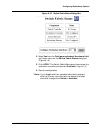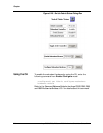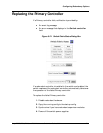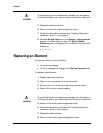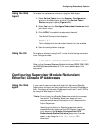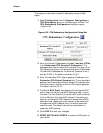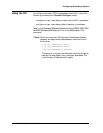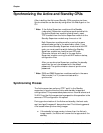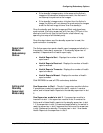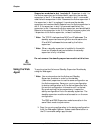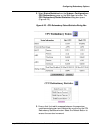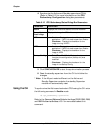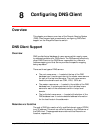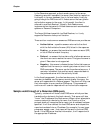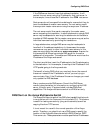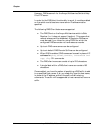
Avaya P550R, P580, P880, and P882 Multiservice Switch User Guide, v5.3.1 7-15
Configuring Redundancy Options
■ If the standby's image version is the same as the Active's
image and the sizes and checksums match, the Active will
not attempt to synchronize the images.
■ If the standby's image version is higher than the Active's
image, the Active will not attempt to synchronize the images
since the Active’s image is lower than the standby’s.
Once the standby and Active's images and Boot code have been
synchronized, the Active supervisor will then do a TFTP put of the
startup.txt and the.int files (critical files for a fast failover, e.g.,
spanning tree map of all blocked ports).
Once this step is done, and the standby supervisor is reset, the
synchronization is complete.
Supervisor
Module
Redundancy
Status
The Active supervisor sends a health report message periodically to
the standby (redundant) supervisor. If the standby supervisor is
enabled, it responds with a health report reply.
■ Health Reports Sent - Displays the number of health
reports sent.
■ Health Reports Received - Displays the number of health
reports received.
■ Health Reports Timeouts - Displays the number of health
reports timeouts.
■ Health Reports Missed - Displays the number of health
reports missed.
Click REFRESH to reset all CPU redundancy statistics.
Active and
Standby
Supervisor
Mastership
One Supervisor in Slot 1 - The slot 1 supervisor module is Active.
If a supervisor module is inserted into slot 2, module 1 remains
active, and initiates Health Reports to the standby supervisor in slot
2.
One Supervisor module in slot 2 - If a supervisor module is
inserted into slot 1, the supervisor module in slot 2 remains the
Active and initiates Health reports to the standby supervisor in slot
1. If the supervisor in slot 2 is removed/reset/failed or the switch is
reset the supervisor in slot 1 becomes the Active and the supervisor
in slot 2 becomes the standby. The supervisor in slot 1 then sends
Health Reports to the supervisor in slot 2.



